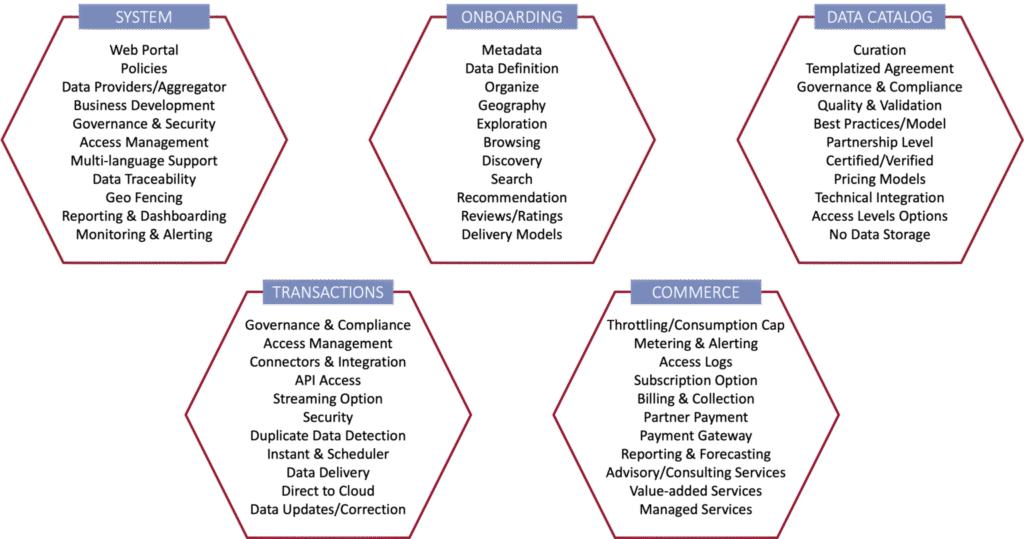By Jerry Locke, Snowflake Delivery Lead, featuring Kireet Kokala & Azmath Pasha
Featuring Paradigm Data Exchange (PDeX), a unique service offering for the data cloud
Cloud data sharing does’t need to be an ambiguous topic. Whether sharing internally or with customers and business partners, including this in enterprise roadmap strategies will be a game changer for modern enterprises.
We are here to inform, enlighten and ultimately motivate your team along your data cloud journey. As we will discuss, while data sharing is native on many cloud platforms, there are nuances that require guidance.
What comes to mind when you think of data? Images and pictures we store on our phones? Documents you store on a local drive or in the cloud? Data is truly ubiquitous these days. For context, let’s look at video streaming. Something we have all done more of lately!
For modern cloud enterprises such as Netflix, around 1 GB of data is consumed when watching a movie in (SD) standard definition. In (HD) high definition, it is 3 GB and 4K (UHD) ultra-high definition comes in around 7 GB. Crazy when you think about that from a consumer level. However, how do modern enterprises not only manage cloud data but also share and leverage data?
What is Data Sharing?
Using the Netflix example above, with over 213 million subscribers, it’s not the data they produce but rather the metadata surrounding that video usage that becomes critical, if not essential, for their growth. Devices, web beacons, cookies, and device indicators help drive consumption in new and innovative ways. Data sharing in this example is vital to that path.
For a simpler approach, let’s define data sharing as “the ability to distribute the same sets of data with multiple users, enterprises and/or applications while maintaining fidelity across all entities consuming the data sets”. Before cloud modernization (or born into the cloud like Dropbox and Netflix) had begun, the biggest challenge with data sharing was physical movement. Setting up FTP servers or sending physical drives to and from offices and data centers were common methods, and some still are – believe it or not. Data sharing in the cloud is not only more secure but has truly broken down these old business paradigms (pun intended).

Cloud data sharing is changing the scope of what is possible with three business objectives and key differentiators.
- Providing Live Data: Enables business efficiencies with live data (internal and external) that optimizes cloud spend and streamlines operations.
- Eliminating Traditional Data Silos: A true, single version of the truth to share with external and internal groups is vital to modern cloud enterprises. Sharing this data and providing masking and obfuscation methods removes old solos with well-understood security methods.
- Creating Modern Data Provider Controls: With direct access to share, the data provider has control over who can consume the data, what they see, and audit logs for further data governance. This ensures secure governed access not comparable to past non-cloud implementations.
Cue PDeX – Paradigm Data Exchange
PDeX is a custom suite of data cloud offerings enabling customers to find and subscribe to third-party data using Snowflake Data Exchange to make queries in the data cloud. Customers in the Data providing business can list and offer products containing Snowflake data sets in the catalog, granting subscribers direct, read-only access to the data stored in a cloud data warehouse. Customers can quickly query, analyze, and build applications with these third-party data sets.
PDeX enables customers to leverage data sharing capabilities over native hyper-scalers (AWS, Azure, GCP) in a platform agnostic way, rendering simplicity of data sharing to customer workloads. As a Global System Integrator and premier Snowflake partner, Paradigm is well positioned to help build out and implement data sharing capabilities on all major cloud platforms.
Cloud data sharing is a critical workload that must be consistently addressed and factored in. We recommend our customers to embrace the change in adopting a suitable cloud data sharing capability.
Paradigm Data Exchange (PDeX) accelerates collaboration without costly and cumbersome user provisioning or training burden – our synergistic solution is easy and intuitive, enabling engagement and teamwork. For more information and to see how Paradigm can help you in your data sharing transformation, get in touch with one of our data cloud experts today.

